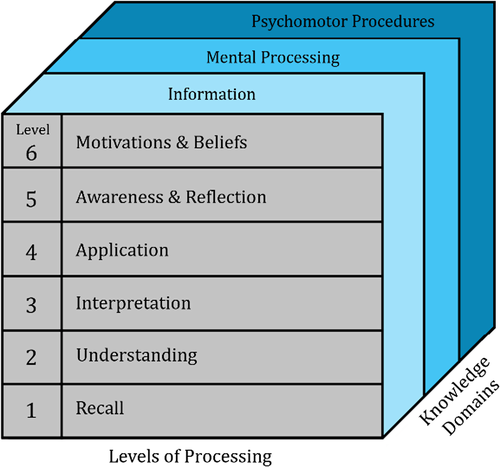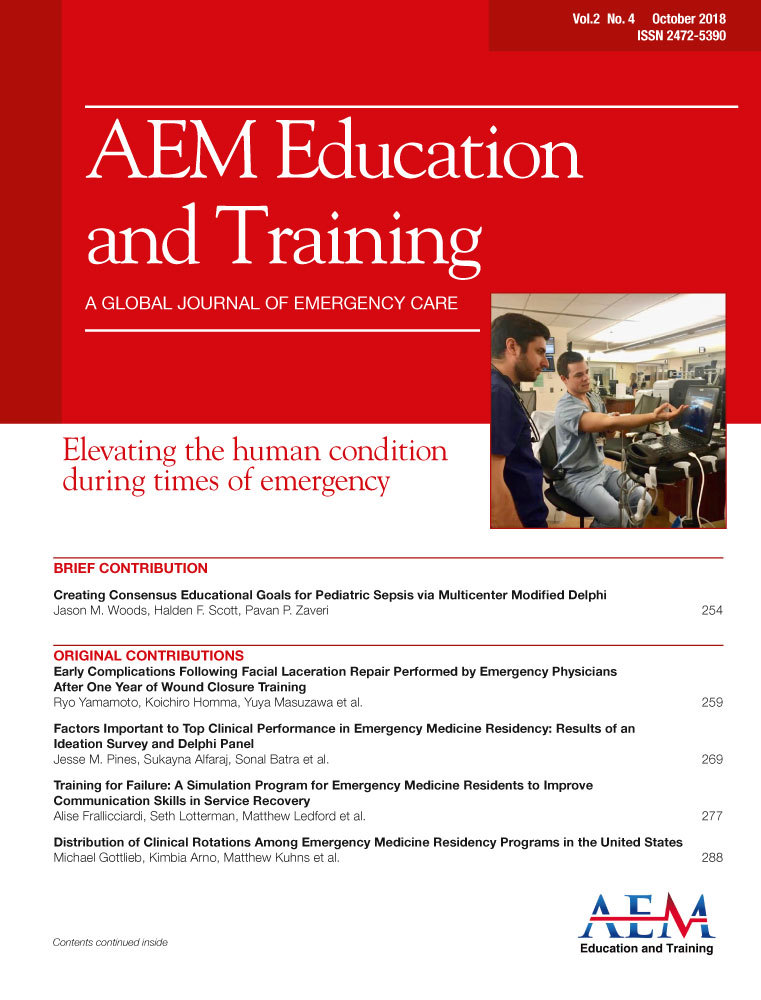Strategic Questioning in Emergency Medicine Training
Abstract
Strategic questioning is a technique that can enhance the unique learning environment of emergency medicine (EM) training. By incorporating this into the routine expert–learner encounters of daily practice, it can be used to engage learners, explore their knowledge base, probe for gaps, encourage development, and grow critical thinking skills. We propose that this become routinely used in EM training as a tool to strengthen residency education.
The emergency department (ED) is an environment rife with uncertainty and interruptions, quick patient turnover, and often brief yet critical patient encounters. While residency education in emergency medicine (EM) shares some similarities to other specialties, such as formal sign-out and structured teaching sessions, the constant presence of attending physicians in the ED makes this training environment unique among other medical specialties. This combination of fast-paced learning environment coupled with the constant presence of supervising physicians creates incredible potential for learning.
One approach to help realize this potential is strategic, question-prompted learning. This approach adapts the Socratic method, with guidance from Bloom's taxonomy, to create a learner-centered, progressively complex questioning strategy by which the instructor can identify knowledge gaps and stimulate critical thought in an environment of mutual respect with a graduated design. Interpretations of Socratic questioning have taken many forms, but the modern approach is rooted in three consistent components: working collaboratively with the learner; probing, open-ended questions; and reflection with focused discussion.1, 2
Similarly, Bloom's taxonomy is a hierarchical model used to classify learning. Therefore, strategic questioning that uses Bloom's taxonomy as a scaffold can guide learners from basic recall to critical thinking and reflection. Dialogue can begin with convergent questions (closed-ended, seeking a specific response) to identify the learner's knowledge base while probing for gaps and evolve into divergent questions (open-ended, requiring application of thought to develop an answer) with an escalating level of complexity as the learner progresses.3, 4 By traversing this model, the learner can build on each step and climb the ladder through understanding, applying, analyzing, and evaluating (Table 1).
| Categories | Key Words | EM specific Sample Questions |
|---|---|---|
|
Remember/understand
|
Define List State Describe Recognize Explain |
|
|
Apply/analyze
|
Interpret Demonstrate Execute Organize Question Relate Compare and contrast |
|
|
Evaluate/create
|
Appraise Critique Justify Develop Construct Investigate |
|
- PE = pulmonary embolism.
Bloom's taxonomy has also been molded into a variety of different uses since inception over 60 years ago. In 2007, Marzano and Kendall5 proposed “The New Taxonomy of Educational Objectives,” which served as an update to Bloom's that “incorporated modern advances in the understanding of human thought and the structure of knowledge.” This model more accurately reflects the breadth of skills demonstrated in the ED. For example, if an instructor asked a learner to recall a fact, this would come from the recall level of the information domain. Similarly, debriefing after a failed intubation would come from the awareness and reflection level of both the mental processing and the psychomotor domain (Figure 1).

To effectively perform the question-prompted learning approach in the ED, attendings must foster a safe learning environment through mutual respect between the instructor and learner, in contrast to traditionally unidirectional “pimping.” Once this groundwork has been lain, the teacher should first focus on the lower-order questions, especially if the learner is unfamiliar, to characterize their knowledge base. This step can be done repeatedly across the spectrum of core knowledge competencies. It would be unreasonable to ask a learner to describe comprehensive sepsis management before you have confirmed that they can first recognize the condition. If significant deficiencies are identified with lower-order questioning, the instructor should not move on to higher levels, but rather spend time remediating. Once a learner has demonstrated solid foundational knowledge, the instructor should escalate question complexity, striving to push the learner toward critical thinking. If working in a group setting with multiple levels of learners present, the attending should attempt to direct questions with increasing difficulty toward senior learners in the presence of junior learners, thereby making critical thinking transparent.
An approach to strategic, question-prompted learning involving a patient presenting with a myocardial infarction is illustrated in Table 2. Questions at the recall level probe the learner to simply remember medical knowledge. After identifying these data points, they can be strung together by understanding the presentation of disease. Applying questions will allow learners to demonstrate knowledge by implementing a plan. Analyzing questions allow learners to begin deeper exploration. Evaluating questions allow the learner to weigh the pros and cons of differing strategies. And finally, creating questions challenge the learner to assimilate ideas into new original work, although this higher level is not routinely achieved during typical encounters.
| Questioning Level | Learner Action | EM-specific Sample Questions |
|---|---|---|
| Recall | Remember medical knowledge |
|
| Understanding | Organize and assimilate data |
|
| Applying | Demonstrate knowledge by implementing a plan |
|
| Analyzing | Begin deeper problem exploration |
|
| Evaluating | Weigh the pros and cons of different strategies |
|
| Creating | Assimilate ideas into new original work |
|
- MI = myocardial infarction; NSTEMI = non-ST-elevation myocardial infarction; STEMI = ST-elevation myocardial infarction.
Strategic questioning is a technique that can enhance the unique learning environment of EM training. By incorporating this into the routine expert–learner encounters of daily practice, it can be used to engage learners, explore their knowledge base, probe for gaps, encourage development, and grow critical thinking skills.6 We propose that this become routinely used in EM training as a tool to strengthen residency education.




